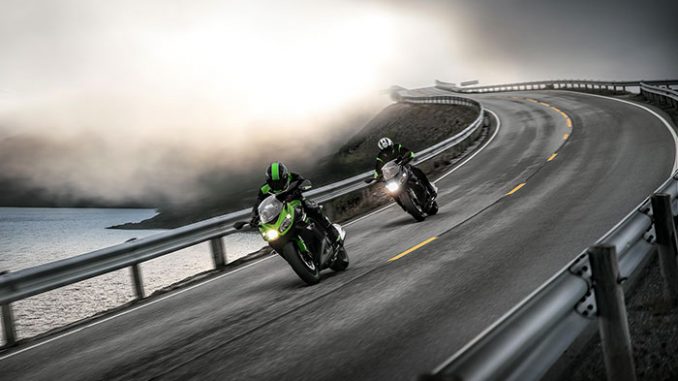
2016 Kawasaki Z1000SX
2016 Kawasaki Z1000SX Review
2016 Kawasaki Z1000SX on www.Totalmotorcycle.com
Power To Move You…
The Z1000SX has the power to move you, matching sports style, response and performance with more practical features such as a refined pannier option and the addition of new electronic rider aids as well as braking and suspension upgrades. As a sports or touring platform, the Z1000SX has few, if any, rivals. Add the timeless Kawasaki DNA and it is sits proudly in a class of one.
2016 Kawasaki Z1000SX www.Totalmotorcycle.com Key Features
Available in ABS and Non-ABS Versions.
2016 Kawasaki Z1000SX www.Totalmotorcycle.com Features and Benefits
Integrated panniers
Accessory panniers offer increased touring potential. Revised mounting system allows the panniers to be better integrated into the rear section of the bike, and ensures the Z1000SX’s sleek sporty looks are maintained when the panniers are removed. (Available as accessory)
Cool Air system
Intake ducts at the front of the side fairings route a steady supply of cool air to the engine. The Cool Air system routes cool air to the airbox from ducts at the front of the side fairings, minimising performance loss due to heated intake air.
1,043 cm3 liquid-cooled, 4-stroke In-line Four
Powerful engine pulls strongly from all rpm and does not let up before the redline. Adding to rider exhilaration, the engine delivers superb response, a strong mid-range hit and an intoxicating intake howl. More direct response thanks to revised engine settings adds to the Z1000SX’s sporty street riding potential.
Inverted front fork
41 mm inverted fork is adjustable for compression and rebound damping and spring preload. Sportier settings deliver quicker handling while maintaining excellent ride comfort, ensuring the response and handling for enjoyable street riding both in town and in the hills.
ABS
Horizontal Back-link Rear Suspension
Assist & Slipper Clutch
KTRC (3-mode)
Power Modes
Throttle Valves
Economical Riding Indicator
LED taillight
Slim and compact tail cowl design moves mass both physically and visually away from the rear and toward the front. LED taillight with red LED bulbs and a smoked lens adds a touch of class to the tail cowl.
Pre-chamber and short silencers
Using an under-engine pre-chamber enables smaller-volume silencers, contributing to both mass centralisation and a more concentrated styling. Revised silencer end-cap design adds to sporty looks.
Horizontal Back-link rear suspension
This rear suspension arrangement offers excellent performance while contributing to mass centralisation. A stiffer spring and revised damping settings contribute to more direct handling, while a new remote preload adjuster facilitates setting up for rides with a passenger and/or luggage.
Mass centralisation
Under-engine pre-chamber, Horizontal Back-link rear suspension and downdraft throttle bodies are the key elements to mass centralisation. Light, nimble handling is the result.
Aluminium rear frame
Slender design makes it easier for riders to reach the ground while offering tandem comfort and under-seat storage space. Light weight contributes to mass centralisation.
Radial-mount monobloc calipers
Supersport-style brake package includes triple petal discs, radial-mount monobloc calipers and radial-pump front brake master cylinder. The new Tokico monobloc calipers and new brake pad material contribute to a firmer initial touch, superb braking control and even more formidable stopping power.
Lightweight wheels
Supersport-style wheels reduce unsprung weight and contribute to racy styling.
Seductive full-fairing styling
The Z1000SX’s well-integrated full-fairing styling offers a good indication of its sporty character. The sensuous styling is both audacious and subtle at the same time. Full-fairing bodywork gives the Z1000SX a distinct, head-turning look. The sleek styling also offers a good measure of wind protection, facilitating short touring runs.
Relaxed riding position
The Z1000SX relaxed riding position was designed to accommodate everything from city riding to touring to sport riding. This blend of comfort and control allows the rider to enjoy a variety of riding situations. Relatively upright position offers both control and comfort.
adjustable-windscreen
Windscreen has three available positions spanning approximately 20o and ranging from sporty to maximum wind protection, to suit rider preference. Adjustment can be done by hand (no tools required) by depressing the release button below the instrument panel.
Aluminium passenger grips
Ergonomic passenger grips are easy to grab, contributing to passenger confidence.
Large-volume Fuel Tank
19 litre fuel tank offers a substantial touring range. Dynamic fuel tank design with tall upper surface features supersport-style flared edges with a trim shape at the rear, a shape that is easy to grip with the knees.
Aluminium twin-tube frame
The highly rigid aluminium frame features a high degree of mass centralisation, ensuring a balance of sharp turning and firm handling. Aluminium twin-tube frame design features frame beams that go over engine, allowing a narrow construction that is easy to grip with the knees.
Numerous accessories
In addition to the accessory panniers, a top case and numerous other accessories add to the Ninja 1000’s touring potential and everyday versatility.
ABS
Sudden over-application of the brakes, or braking on low-grip surfaces (surfaces with a low coefficient of friction) such as wet asphalt or manhole covers may cause a motorcycle’s wheel(s) to lock up and slip. ABS was developed to prevent such incidents. Kawasaki ABS systems are controlled by high precision and highly reliable programming formulated based on thorough testing of numerous riding situations. By ensuring stable braking performance, they offer rider reassurance that contributes to greater riding enjoyment.
And to meet the special requirements of certain riders, specialised ABS systems are also available. For example, KIBS (Kawasaki Intelligent anti-lock Brake System) is a high-precision brake system designed specifically for supersport models, enabling sport riding to be enjoyed by a wider range of riders. And by linking the front and rear brakes, K-ACT (Kawasaki Advanced Coactive-braking Technology) ABS provides the confidence to enjoy touring on heavyweight models. Kawasaki is continually working on the development of other advanced ABS systems.
Horizontal Back-link Rear Suspension
Compared to Kawasaki’s traditional Uni-Trak rear suspension, which mounts the shock unit vertically, with Horizontal Back-link rear suspension, the shock unit is almost horizontal. Kawasaki’s original suspension arrangement locates the shock unit very close to the bike’s centre of gravity, greatly contributing to mass centralisation.
And because there is no linkage or shock unit protruding beneath the swingarm, this frees up space for a larger exhaust pre-chamber (an exhaust expansion chamber situated just upstream of the silencer). With a larger pre-chamber, silencer volume can be reduced, and heavy exhaust components can be concentrated closer to the centre of the bike, further contributing to mass centralisation. The result is greatly improved handling.
Another benefit is that the shock unit is placed far away from exhaust heat. Because it is more difficult for heat from the exhaust system to adversely affect suspension oil and gas pressure, suspension performance is more stable. Horizontal Back-link rear suspension offers numerous secondary benefits like this.
Assist & Slipper Clutch
Based on feedback from racing activities, the Assist & Slipper Clutch uses two types of cams (an assist cam and a slipper cam) to either drive the clutch hub and operating plate together or apart.
Under normal operation, the assist cam functions as a self-servo mechanism, pulling the clutch hub and operating plate together to compress the clutch plates. This allows the total clutch spring load to be reduced, resulting in a lighter clutch lever feel when operating the clutch.
When excessive engine braking occurs – as a result of quick downshifts (or an accidental downshift) – the slipper cam comes into play, forcing the clutch hub and operating plate apart. This relieves pressure on the clutch plates to reduce back-torque and help prevent the rear tyre from hopping and skidding.
KTRC (3-mode)
3-mode KTRC combines the traction control technology of both 1-mode KTRC, which provides enhanced stability in slippery situations by preventing wheel slip, and S-KTRC, which helps maintain optimum traction in sport riding situations by predicting the rear wheel slip ratio during acceleration, into a single system.
The convenient handle switch allows the type of traction control to be changed instantly by selecting one of the three modes, even while riding. Modes 1 and 2 maintain optimum traction during cornering, like S-KTRC. Designed with sport riding in mind, they enable sharp acceleration out of corners by maximising forward drive from the rear wheel. Modes 1 and 2 differ in the amount that they intervene. Mode 1, set for dry, good-grip road conditions, maintains the ideal slip ratio to ensure optimum traction.
Mode 3 operates like 1-mode KTRC, reducing power to allow grip to be regained when rear wheel spin is detected. It is ideal when riding in slippery conditions or in the wet. Enabling riders to easily change traction control character, 3-mode KTRC is Kawasaki’s most advanced engine management system.
Power Modes
Power modes offer riders an easily selectable choice between Full and Low Power. While Full Power is unrestricted, in Low Power mode maximum power is limited to approximately 75-80% of Full. Response is also milder in Low Power mode. Riders may opt to use Low Power mode for rainy conditions or city riding, and Full Power when sport riding.
Available on the Ninja ZX-14R / ZZR1400, Versys 1000 and other key models, when combined with the 3-mode KTRC (+ OFF) traction control system, Power Mode selection offers a total of eight combinations (KTRC: Mode 1/2/3+OFF x Power Mode: Full/Low) to suit a wide range of riding situations. For example, an experienced rider enjoying sport riding on dry pavement might choose Full Power and Mode 1. On a wet or slippery surface, choosing Low Power and Mode 3 would yield the lowest chance of incurring wheel spin, and with the milder throttle response would offer a high level of riding safety.
Dual Throttle Valves
Late-model sport bikes often use large-bore throttle bodies to generate high levels of power. However, with large diameter throttles, when a rider suddenly opens the throttle, the unrestricted torque response is anything but gentle and often more than the rider can handle. Dual throttle valve technology was designed to tame engine response while contributing to performance.
On fuel-injected models, throttle bodies generally have only one throttle valve per cylinder. On models with dual throttle valves, there are two throttle valves per cylinder: in addition to the main valves, which are physically linked to the throttle grip and controlled by the rider, a second set of valves, opened and closed by the ECU, precisely regulates intake airflow to ensure a natural, linear response. With the air passing through the throttle bodies becoming smoother, combustion efficiency in improved and power is increased.
Like other Kawasaki engine management technology, Dual Throttle Valves were designed with the philosophy of “following the rider’s intention, while providing natural-feeling support.” They are featured on many Kawasaki models.
Economical Riding Indicator
Using high-precision electronic control for engine management, Kawasaki models can achieve a high level of fuel efficiency.
However, fuel consumption is greatly affected by throttle use, gear selection, and other elements under the rider’s control. The Economical Riding Indicator is a function that indicates when current riding conditions are consuming a low amount of fuel. The system continuously monitors fuel consumption, regardless of vehicle speed, engine speed, throttle position and other riding conditions. When fuel consumption is low for a given speed (i.e. fuel efficiency is high), an “ECO” mark appears on the instrument panel’s LCD screen. By riding so that the “ECO” mark remains on, fuel consumption can be reduced.
While effective vehicle speed and engine speed may vary by model, paying attention to conditions that cause the “ECO” mark to appear can help riders improve their fuel efficiency – a handy way to increase cruising range. Further, keeping fuel consumption low also helps minimise negative impact on the environment.
2016 Kawasaki Z1000SX – www.Totalmotorcycle.com USA Specifications/Technical Details
US MSRP Price: $NA USD
NA
2016 Kawasaki Z1000SX – www.Totalmotorcycle.com Canadian Specifications/Technical Details
Canada MSRP Price: $ See Dealer for pricing in CDN
NA
2016 Kawasaki Z1000SX – www.Totalmotorcycle.com European Specifications/Technical Details
Europe/UK MSRP Price: £9,699 ABS GBP (On The Road inc 20% Vat)
Engine
Engine type
Liquid-cooled, 4-stroke In-Line Four
Displacement
1,043 cm3
Bore x stroke
77.0 x 56.0 mm
Compression ratio
11.8:1
Valve/Induction system
DOHC, 16 valves
Fuel system
Fuel injection:?38 mm x 4 (Keihin) with oval sub-throttles
Ignition
Digital
Starting
Electric
Lubrication
Forced lubrication, wet sump
Frame
Frame type
Aluminium twin-tube
Rake/Trail
24.5o/102 mm
Wheel travel, front
120 mm
Wheel travel, rear
138 mm
Tyre, front
120/70ZR17M/C (58W)
Tyre, rear
190/50ZR17M/C (73W)
Steering angle, left / right
31o / 31o
Performance
Maximum power
104.5 kW {142 PS} / 10,000 rpm
Maximum torque
m {11.3 kgf*m} / 7,300 rpm 111 N
Transmission
Transmission
6-speed, return
Final Drive
Sealed chain
Primary reduction ratio
1.627 (83/51)
Gear ratios: 1st
2.600 (39/15)
Gear ratios: 2nd
1.950 (39/20)
Gear ratios: 3rd
1.600 (24/15)
Gear ratios: 4th
1.389 (25/18)
Gear ratios: 5th
1.238 (26/21)
Gear ratios: 6th
1.107 (31/28)
Final reduction ratio
2.733 (41/15)
Clutch
Wet multi-disc, manual
Brakes
Brakes, front
Dual semi-floating 300 mm petal discs. Caliper: Dual radial-mount, monobloc, opposed 4-piston.
Brakes, rear
Single 250 mm petal disc. Caliper: Single-piston
Suspension
Suspension, front
41 mm inverted fork with stepless compression and rebound damping and spring preload adjustability
Suspension, rear
Horizontal Back-link, gas-charged, with stepless rebound damping and remote spring preload adjustability
Dimensions
Dimensions (L x W x H)
2,105 x 790 x 1,170/1,230 (high position) mm
Wheelbase
1,445 mm
Ground Clearance
135 mm
Fuel capacity
19 litres
Seat height
820 mm
Curb Mass
230 kg / 231 kg (ABS)
*Starting at MSRP is the manufactured suggested price and excludes delivery, setup, tax, title, license, and additional fees and expenses. Bikes may be shown with optional accessories. Final sale price determined by an authorized dealer. Specifications and MSRP are subject to change.
Manufacturer Specifications and appearance are subject to change without prior notice on Total Motorcycle (TMW).


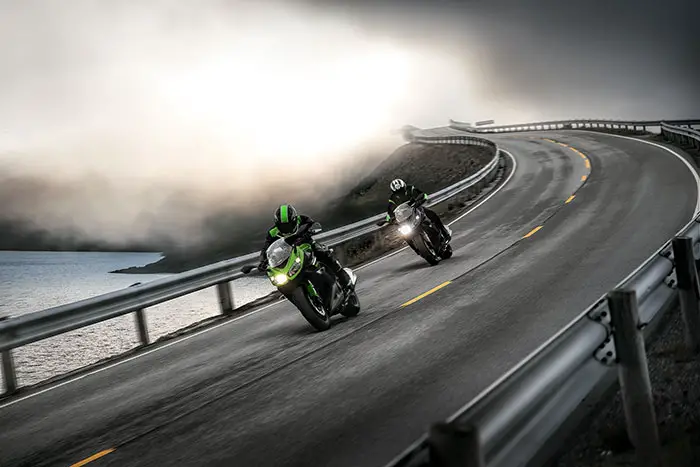
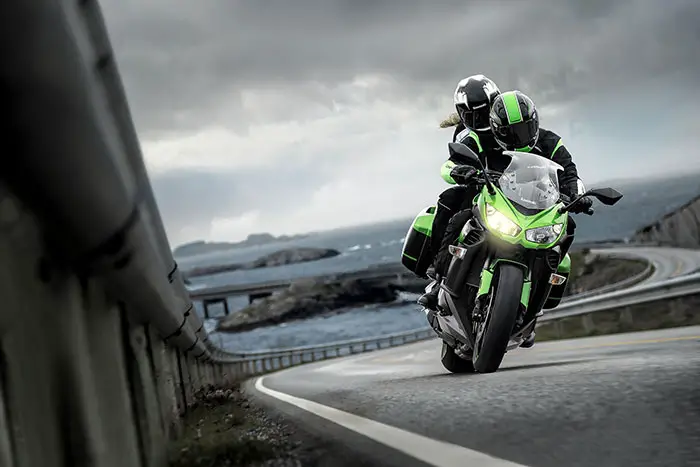
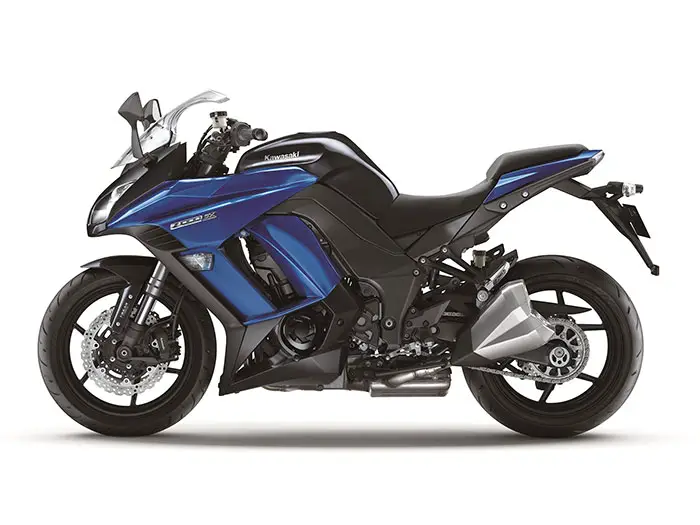
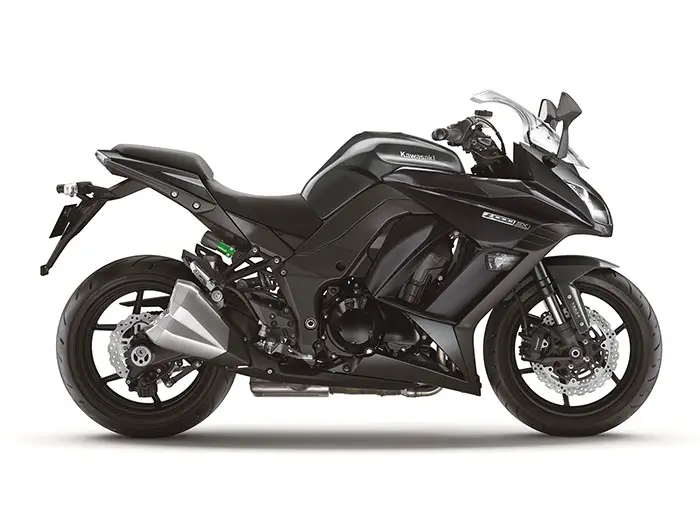
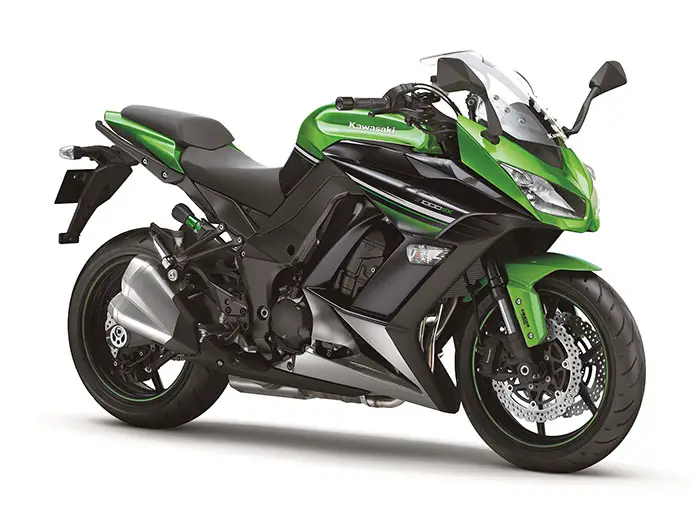
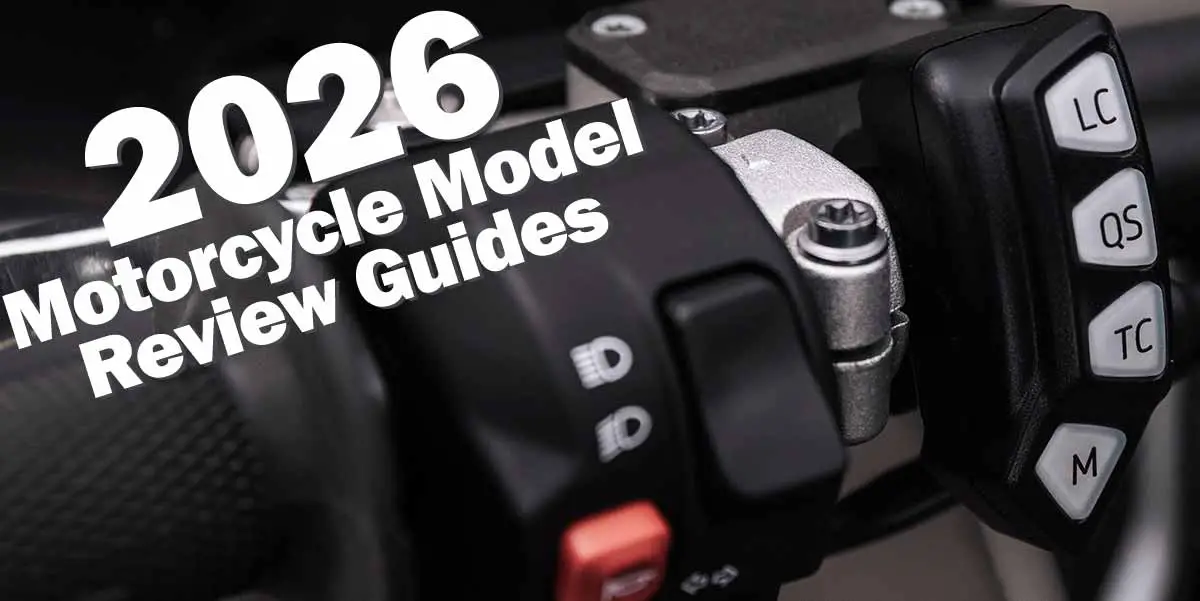
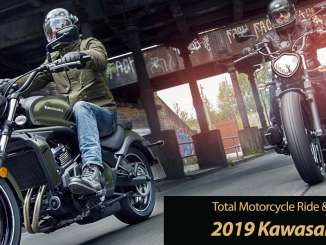


Be the first to comment